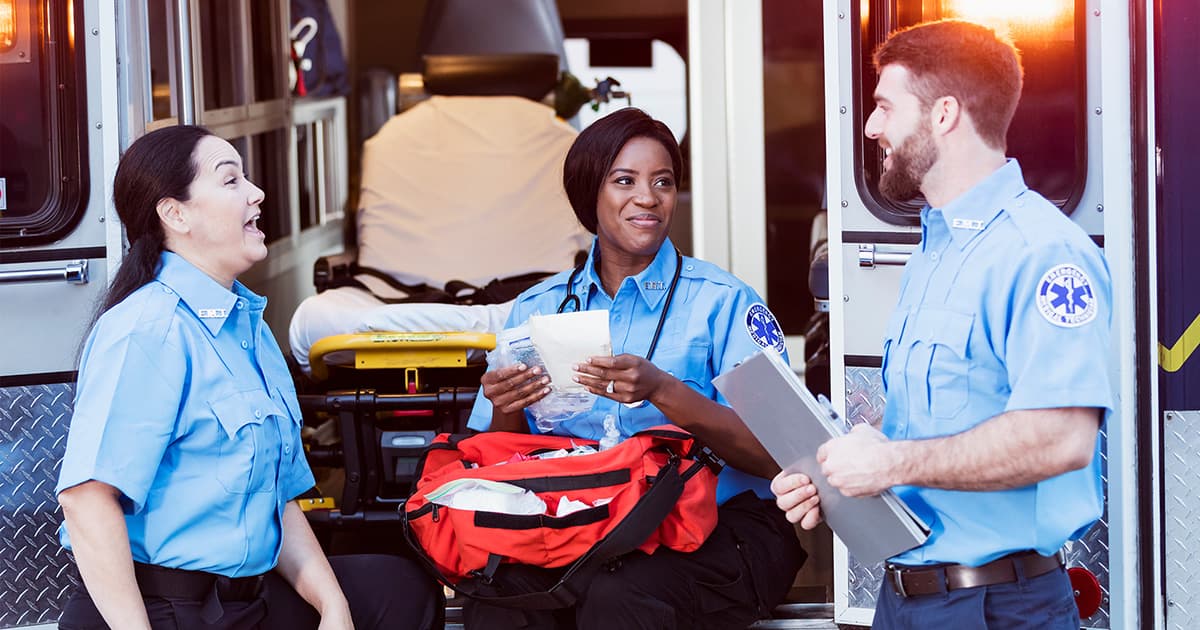EDITOR'S NOTE: Special thanks to Megan Wittmann for writing today's blog post. You can connect with her on LinkedIn. This is Part 2 of our blog series Building Effective Teams. Click here to check out parts 1 - 5.
In Part One of my "Building Effective Teams" series, you were left to think about two questions:
- Who is your team?
- What is their purpose?
Thinking about these questions may have proven to be more difficult than expected. This is not surprising though, as it is common for clinicians to be part of different teams throughout a single workday.
Think about a nurse in the emergency room: she may identify her team as the nurses, techs, and ER providers who work with her during her shift. However, when she gets alerted that a critical trauma patient is coming in, her team is expanded to include flight nurses, CT, and the trauma surgeon. This may not be the team she would identify with on a daily basis, but it is a team she is part of, and whose functions and unity during emergency events are critical.
In healthcare, the teams best equipped to handle the most complex scenarios are those that can be dynamically built as a case evolves without losing their cohesion or effectiveness. Building a cohesive team is hard work, often taking deliberate efforts and clear purpose ... not easy to do with changing membership in urgent situations. The good news is that there are key concepts and behaviors that can be applied to improve team outcomes.
We can learn a great deal about how to build cohesive teams by considering what makes teams dysfunctional. Patrick Lencioni is well known for presenting these dysfunctions in a hierarchical pyramid:
.png?width=671&name=unnamed%20(2).png)
In order to avoid these dysfunctions and develop highly effective teams, we should focus on:
- Building Trust
The goal is for team members to have confidence in the reliability, truth, ability, and integrity of other team members. This includes being vulnerable with one another.
- Surfacing Conflict
Healthy conflict involves hearing differing viewpoints, understanding them, and respectfully getting to the best resolution.
- Commitment to Decisions and Standards
This is unlikely to happen if items 1 and 2 are not in place. It is important that all team members have clarity on decisions and standards in order to commit.
- Holding Yourself and Others Accountable
When the first 3 factors are present, team members can be open to approaching colleagues about behaviors that hurt the team. It is advised to do so with positive intent that is focused on learning and getting better.
- Focusing on Collective Results
Team goals will become prioritized over individual goals.
These behaviors build on each other, starting with the need to build trust. In part 3 of this series, I’ll walk you through how to begin this vital first step.
In the meantime, click here to read more about the trust pyramid.
References:
Lencioni, P. M. (2007). The five dysfunctions of a team: A leadership fable. San Francisco, Calif.: Jossey-Bass.
Drexler, A., Sibbet, D. and Forrester, R. (1993). Team performance model. 1st ed. San Francisco: The Grove Consultants International.
 Team Pulsara
Team Pulsara
![Building Effective Teams [Part 2]: Improving Team Outcomes](https://www.pulsara.com/hubfs/doctor-to-doctor-chat.png)
.png?width=671&name=unnamed%20(2).png)
![[PRESS RELEASE] Published Research Finds Up to 31% Faster STEMI Treatment Times in Rural Hospital Setting with Pulsara](https://www.pulsara.com/hubfs/_1_website-page-blog-assets/pulsara-hosp-teams-assign-cardio-stemi-rn-1200x701.jpg)

